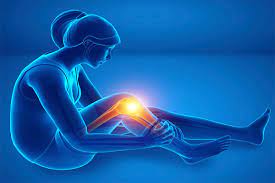
- Stroke is the primary factor in every sixth death resulting from cardiovascular disease.
- In the United States, a stroke claims the lives of one person every 3.5 minutes and one person every 40 seconds.
- More than 795,000 people in the US experience a stroke each year.
- 610,000 people overall had a stroke for the first time. Additionally, 185,000 people are dealing with the issue again.
The statistics provided above signifies the important of stroke prevention. AR in healthcare and VR stroke rehabilitation programs are making the life of people easy. Prevention, however, is always preferable to treatment. Therefore, we will talk about the advice that will aid in preventing strokes in today’s blog.
Stroke Prevention Tips
Age makes the likelihood of stroke more apparent. You are also at risk if a member of your family or a close relative has previously experienced a stroke. Although the family history cannot be changed, stroke prevention can be done with the proper care.
Some of the key ideas that can aid you in preventing strokes are listed below.
Blood Pressure Monitoring
High blood pressure is regarded as a major risk factor for stroke, affecting both men and women equally. Keeping a close eye on your blood pressure can help lower your risk.
The ideal blood pressure range is 90/60 mmHg to 120/80 mmHg. High blood pressure is defined as readings of 140/90 mmHg or higher.
You must moderate your salt intake, which shouldn’t exceed 1,500 milligrams per day, in order to maintain a healthy blood pressure level. In addition, there is a requirement to limit the consumption of foods high in cholesterol. The good idea is to consume 4 to 5 cups of fruits and vegetables each day.
Healthy weight
Stroke prevention is also possible with weight control. Along with the stroke problem, obesity is a significant contributor to all chronic health issues. Attempt to lose some weight if you are a bit overweight. Your ideal body mass index (BMI) should be 25 or lower, but if you find it challenging to maintain, consult a dietician and pick an appropriate diet strategy.
Consume 1,500 to 2,000 calories per day, depending on your activity level and current BMI, to maintain your ideal weight. To burn off extra calories you consume, you must exercise frequently. For an active lifestyle, you can choose outdoor sports as well.
Regular Exercise
Exercise is a crucial factor in both weight loss and blood pressure reduction. Additionally, it has a significant effect on preventing strokes. As a result, make an effort to work out at a moderate intensity at least five days per week. Before or after breakfast, you can incorporate various forms of exercise, such as walking around the neighbourhood and using a treadmill.
Correct breathing cuts down on health risks by 50%, also helpful for stroke prevention. It is also a signal that your health is doing great. If you experience breathlessness while working out, you should be a little kinder to yourself. If so, go with a low-intensity workout plan and gradually raise the difficulty level. Additionally, you have the choice of an elevator or a staircase. If you can’t exercise for 30 minutes straight, break it up into a few 10- to 15-minute sessions throughout the day.
Moderate Alcohol Consumption
It’s acceptable to consume one drink of alcohol on average per day. Your risk rises once you start consuming more than two drinks per day. Assign yourself the task of limiting your alcohol consumption to one glass per day. You should consider red wine seriously, as some studies indicate that it may help lower your risk of heart disease and stroke.
Atrial Fibrillation
An irregular heartbeat, known as atrial fibrillation, can cause heart clots to develop. A stroke may occur if those clots get to the brain. Atrial fibrillation must be taken seriously because it almost fivefold increases the risk of stroke. Schedule a checkup with your doctor if you experience shortness of breath or heart palpitations.
Your physician might prescribe an anticoagulant drug to thin the blood. If you have atrial fibrillation, you should think about taking one of the direct-acting anticoagulants to reduce your risk of stroke. You can receive additional medical advice from your doctors.
Quit Smoking
There are several ways that smoking speeds up clot formation. Your blood becomes thicker, and it causes more plaque to accumulate in your arteries. One of the most effective lifestyle changes that will significantly lower your risk of stroke is quitting smoking, along with a healthy diet and regular exercise.
VR programs are also available that focus on addiction triggers and assist users in quitting any addiction, including smoking. Your doctor is the best person to talk to about the specifics.
Conclusion
VR stroke rehabilitation helps the person a lot to get back to normal life. Furthermore, AR in healthcare also has many possibilities for treatment and rehab. However, stroke prevention can be possible with the help of proper care and lifestyle modifications. In addition, many people disregard the early stroke symptoms, making the situation even more severe.
Always remember not to overwork yourself and seek emergency medical attention if necessary. These modest changes can make your life better.


